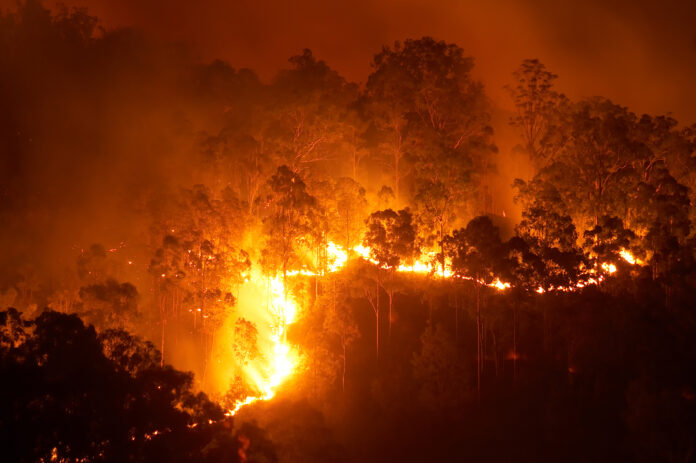Introduction to Wildfires
The recent Amazon rainforest wildfires have once again highlighted one of the greatest environmental disasters, a problem that will only become more acute with global warming. To combat this issue, states are allocating considerable resources and technology to fight wildfires, while also implementing preventive measures such as cleaning up forests. Despite these efforts, however, wildfires remain a severe problem year after year.
New Technology to Fight Wildfires
The University of Stanford has developed a new technology initiative to improve the measure of success in preventing wildfires. Currently, fire retardants are used to prevent the propagation of fires, but they usually contain toxic compounds and lose their efficiency over time, often in less than an hour. Instead, the researchers have developed a gel-like harmless substance that can be sprayed over large extensions of forest with a high risk of wildfires. This new technology can maintain its efficiency for several months, without affecting plants and animals in the area, as it is biodegradable.
How the Retardant Gel Works
The retardant gel is a cellulose-based liquid compatible with current spraying machinery and has already proven its worth in tests carried out in California, an area prone to wildfires. Even following heavy rains, the gel keeps its fire-retardant properties. Before reaching the market, further tests will need to be carried out to assess any environmental impact. If approved, it could become a powerful ally against wildfires, used over large forest areas, or to create temporary firewalls before the hot season arrives.
Big Data: A Digital Firefighter
Fires are also a threat in urban environments, both in areas close to forests as well as within large cities, where firefighters need to provide a fast response. In Los Angeles, the fire department is testing a new software created by WiFire Lab, a laboratory from the San Diego Supercomputer Center. The technology project, called FireMap, analyzes massive amounts of data from different sources, including topography, type of materials in the area, and weather conditions.
How FireMap Works
Every time a fire is recorded in the city, the software carries out an initial analysis that allows predicting the speed and trajectory of the flames. This can be done in a matter of minutes, when a conventional analysis would need several hours that, needless to say, would be much too long to design an intervention. Following the devastating fires that erupted across the state throughout the past summer, the LA firefighters are resorting to all the tools that technology can afford them.
Conclusion
In conclusion, the fight against wildfires is an ongoing battle that requires innovative solutions and technologies. The new gel-like substance developed by Stanford University and the FireMap software being tested in Los Angeles are just two examples of how technology can be used to prevent and combat wildfires. As global warming continues to exacerbate the problem, it is essential that we continue to develop and implement new technologies to mitigate the impact of wildfires and protect our environment. With the help of these digital firefighters, we can hope to reduce the severity and frequency of wildfires in the future.

